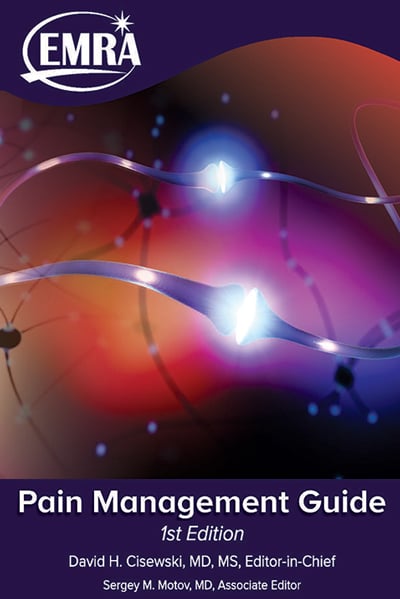Introduction
Lewis S. Nelson, MD
Professor and Chair
Department of Emergency Medicine
Director, Division of Medical Toxicology
Rutgers New Jersey Medical School
Pain is inevitable. Suffering is optional.
Buddhist proverb
Given that most patients who visit an ED have a pain-related complaint, the proper management of pain is a critical skill that all emergency physicians require. But understanding how to manage pain, the focus of this excellent manual, is rivaled in importance by knowing when and how aggressively to manage it.
Like many other aspects of the care of human beings, the assessment and management of pain requires attentiveness to patient-centeredness, which itself is subject to the vagaries of decision-making like social determinants of health, pharmacogenomics, and risk-benefit analysis. While it would seem to the non-medical observer that all pain should be eliminated, physicians understand that nearly every intervention, whether mechanical or pharmacological, carries risk, and that risk must be balanced by the presumed or potential benefit.
The recent three decades of pain management highlight just this issue. Toward the end of the last century, after being chastised for oligoanalgesia, clinicians were bombarded with the tenet that all pain must be relieved, almost regardless of the consequences. We were essentially told to manage the pain score, not the patient. Opioid abuse, addiction, hyperalgesia, overdose, and death became the guidepost of the first decade of this century. But in reality, it is the patients suffering that we needed to manage. This approach has changed our focus from mitigating the pain score to addressing functional outcomes.
Pain is an unpleasant sensation that is generally easily mitigated. Suffering is how we interpret the pain, constrained by our prior experiences, anxiety, fear, and ignorance. Suffering is often what we most need to be addressing, though we often start the process (not inappropriately) by addressing their pain.
The antidote to suffering is information, not medication. We must talk with our patients and provide context, manage their expectations, build their trust, supply a roadmap. When they understand their pain, it is impressive how well we can together manage their suffering.
Pain is a daily occurrence for almost everyone. Safe and effective, evidence-based pain treatment is an achievable goal. Partnering with our patients to provide optimal care is our ultimate responsibility as physicians.





